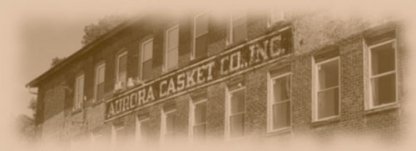Neil Clayton faces a challenge: how to help revitalize lean and help introduce total productive maintenance (TPM) into a mature manufacturing operation.
Clayton is the Quality Manager at Aurora Casket Company, and after learning about and implementing lean processes and TPM at his previous employer, he is confident that the lean and TPM journey at Aurora will be successful. But he recognizes that in this type of situation, transformation is a slow, long-term process that can only be achieved through the right approach.

He previously worked in the auto industry, and Clayton says going from cars to caskets is actually not a big leap. At its plant in Aurora, Indiana, the company makes metal caskets, which “is not that much different from making a car, except we have no power train,” he explains. “We have stamping operations, welding operations, robotic buffing, material handling robots. We’ve got automatic welders, paint systems, a variety of conveyors, ovens, washers, pumps.”
Metal caskets account for about 70 percent of Aurora’s business. Wood and cloth covered caskets, the remaining 30 percent, are made at plants in Tennessee and Canada. “The wood manufacturing is very similar to the furniture industry,” Clayton says. “We process wood from rough mill lumber thru finish operations.”
Top managers at Aurora hired Clayton early 2009 recognizing his ability to support the APS (Aurora Production System) program.
“It’s a competitive environment,” Clayton explains. “We are beginning to see imports in the casket industry. Our margins are contracting. We’ve really got to polish our processes and ensure our equipment is functioning properly at all times, so we’re draining the lake of the waste. We must have TPM and predictable processes to do that.”
So how does one rejuvenate lean and introduce TPM in a mature company? One key is to help employees gain an understanding of the fundamental principles. This fall, Aurora sent its maintenance manager to obtain certification in TPM, an action that Clayton says indicates top management’s commitment to the effort. Aurora’s focus on lean training for all levels is a cornerstone to APS.
“Equally important”, Clayton comments, “we must have employees that are part of functional, effective teams. They have to know and trust we will support them, and that we’re here to help them.”
Gathering data to measure performance is critical. “Although we have extensive shop floor data collection, certain data is not readily available,” Clayton describes. “It can be labor-intensive to accumulate that data. For example, recently we began measuring variation coming off the deep drawing operations, which we previously had never done.”
The order in which tools are deployed is also significant. So far, “we’ve done a lot with visual management – lubrication, labeling what type of lube should be in different equipment, a lot of gauging, so the operator can quickly look and see if air or hydraulic pressure is where it should be,” he says.
Efforts using 5S and value stream mapping are on the agenda, followed by SMED (single minute exchange of die). “TPM will be the last one we roll out to the group, because there is a cultural distance between the maintenance group and the production group,” Clayton observes, noting that this level of maintenance has never before been a responsibility of operators in production. “We have to get some of that proven and sold to the operators on the floor before getting the maintenance team in there. There’s a lot of opportunity on the cultural side.”
For any other company launching or re-charging its lean efforts, Clayton’s advice is “get your people well-versed in the concept of TPM, the philosophy and building teams before you roll out to many tools. It’s almost like giving somebody who wants to be a mechanic all the diagnostic tools and really not telling them ‘we want to build an engine that can do 600 horsepower, and here is why we want to do it.’ It’s really getting that foundation. If you just give them the tools, you’re not going to get the results you want. The key is trying to get that team built and sustainable as quickly as possible.”


